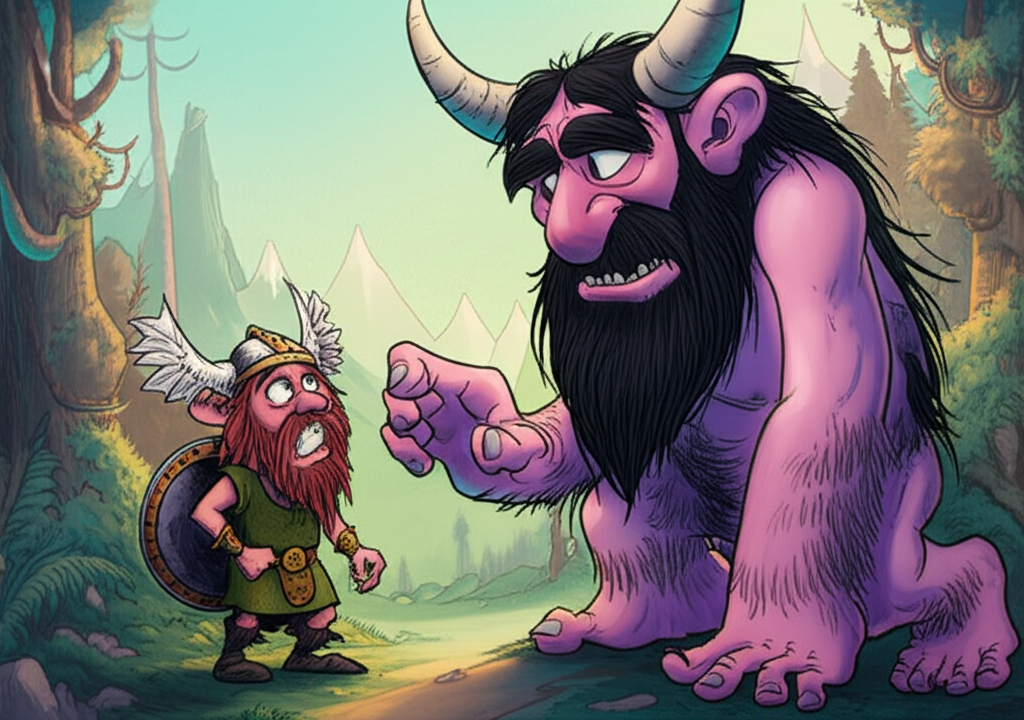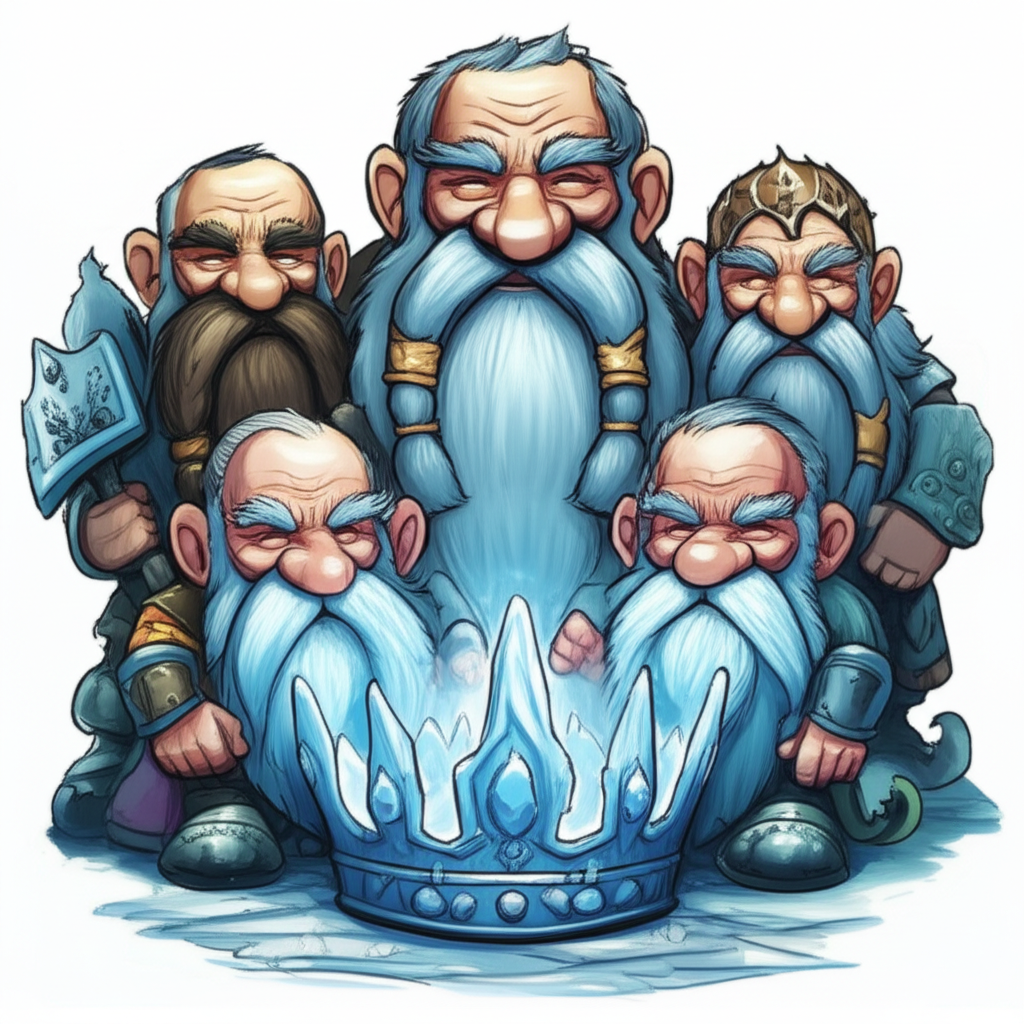
The tales of the Norse gods, a pantheon of beings who dwelled in realms beyond mortal ken, have echoed through the ages, originating from the ancient Germanic and Scandinavian peoples. These sagas, woven into the fabric of their oral traditions and later captured in epic poems like the Poetic Edda and the Prose Edda, offer a glimpse into a world viewed through the lens of a harsh, unforgiving environment, where fate, prowess, and the favor of powerful entities shaped human existence. Among these foundational myths is the story of the Aesir-Vanir War, a conflict that, according to these ancient narratives, profoundly impacted the cosmos and foreshadowed events within Midgard, the realm of humankind.
The cultural backdrop against which these myths flourished was one of rugged landscapes, long, dark winters, and the constant struggle for survival. Viking Age Scandinavia, for instance, was a society deeply intertwined with the natural world. The sea was a highway and a source of sustenance, while the forests held both bounty and danger. Their worldview was not one of a singular, all-powerful Creator in the Abrahamic sense, but rather a complex tapestry of divine forces, spirits of nature, and the inexorable pull of destiny, or wyrd. The gods were not omnipotent beings who dictated every event but rather powerful, often flawed, individuals with their own rivalries, ambitions, and vulnerabilities. Their existence was understood as a reflection of the human experience, albeit on a grander, more cosmic scale. The stories served not only as entertainment but also as a moral compass, illustrating the consequences of actions, the virtues of courage and loyalty, and the ever-present specter of chaos.
Central to the Aesir-Vanir War are the two primary factions of deities: the Aesir and the Vanir. The Aesir were generally depicted as the more warlike and sovereign gods, residing in Asgard, the celestial fortress. Figures like Odin, the All-Father, god of wisdom, war, and magic; Thor, the mighty thunder god, protector of mankind; and Tyr, the god of law and heroic glory, belonged to this lineage. Their symbolic attributes often represented order, power, and the pursuit of knowledge, albeit sometimes through brutal means. Odin, for instance, was known for his insatiable thirst for wisdom, often gained through sacrifice and perilous quests. Thor, with his hammer Mjolnir, symbolized brute strength and the defense of the cosmos against monstrous threats.
The Vanir, on the other hand, were associated with fertility, prosperity, and the natural world. They hailed from Vanaheim, another of the nine realms. Key figures included Freya, the goddess of love, beauty, fertility, and magic, who also held a significant role in guiding fallen warriors to her hall, Sessrúmnir; and her brother, Freyr, the god of peace, fertility, and good harvest. The Vanir were often seen as embodying the more serene and generative aspects of existence, connected to the earth’s bounty and the cycles of life. Their symbolic attributes leaned towards abundance, sensuality, and the nurturing forces of nature. Freya’s association with magic and seidr, a form of divination and sorcery, represented a different kind of power than the Aesir’s martial might.
The narrative of the Aesir-Vanir War, as it unfolds in these ancient tales, begins not with a clear victor or vanquished, but with a fundamental clash born from misunderstanding and perceived transgressions. The exact catalyst for the war is debated in the lore, but a common thread involves the Aesir’s perceived arrogance and the Vanir’s demand for respect and parity. One account suggests that the Aesir, led by Odin, were responsible for burning a wise Vanir sorceress, Gullveig, three times, yet she would not die, instead rising from the ashes each time, her power seemingly amplified. This act of aggression, a violation of the natural order and the sanctity of life, incited the Vanir to retaliate.
The war was not a swift, decisive campaign but a protracted and devastating struggle that shook the very foundations of the Nine Realms. Battles raged, gods clashed, and the cosmos itself seemed to groan under the weight of their conflict. The Aesir, with their martial prowess and formidable warriors like Thor and Odin, fought fiercely. The Vanir, however, possessed their own potent forces, drawing upon the very essence of life and magic. The war’s ferocity and the immense power unleashed meant that neither side could achieve a complete victory. It became clear that a stalemate, born of mutual exhaustion and the realization of the catastrophic consequences of continued warfare, was the only outcome.
To end the bloodshed and forge a lasting peace, the two divine tribes agreed to an exchange of hostages and a merging of their realms. This act of reconciliation was not merely a ceasefire but a fundamental restructuring of the divine order. Prominent figures from both sides were sent to live among the other. Njord, a significant Vanir deity associated with the sea and wealth, and his children, Freyr and Freya, were sent to live with the Aesir. In return, the Aesir sent Hoenir, a skilled warrior and leader, and Mimir, a wise giant known for his profound knowledge, to the Vanir. This exchange, though fraught with initial difficulties (Hoenir’s reliance on Mimir’s counsel is a recurring theme), ultimately led to a period of tentative peace and a deeper understanding between the two factions. The gods, once divided, began to coexist, their powers and domains intertwined.
Crucially, the war also brought forth a prophecy, a glimpse into the future that would profoundly shape the destiny of both gods and mortals. This prophecy, often associated with the seeress in the Voluspá, foretold the coming of Ragnarök, the twilight of the gods. Ragnarök was not seen as an absolute end but as a cataclysmic event, a cosmic battle where many of the gods would fall, and the world would be consumed by fire and flood. However, it was also a prophecy of renewal. From the ashes of the old world, a new, purer realm would emerge, inhabited by a surviving remnant of the gods and two human beings, Lif and Lifthrasir, who would repopulate the earth. The Aesir-Vanir War, with its immense power and the subsequent fragile peace, served as a prelude, a cosmic tremor that set the stage for the ultimate reckoning. The prophecy of Midgard’s eventual renewal after destruction underscored the cyclical nature of existence, a concept deeply embedded in many ancient belief systems.
The symbolism within the Aesir-Vanir War and its prophecy is rich and multifaceted. The war itself can be interpreted as a representation of the inherent conflict between different forces within nature and society: the order and authority of the state (Aesir) versus the generative and organic forces of life (Vanir). It speaks to the difficulties of integrating disparate groups and the challenges of achieving lasting peace after conflict. The exchange of hostages symbolizes the necessity of compromise, understanding, and the sharing of power to maintain stability. The prophecy of Ragnarök, while seemingly bleak, also embodies the human desire for hope and renewal. It suggests that even in the face of utter destruction, there is the potential for a new beginning, a testament to the enduring spirit of life and creation. The story also highlights the importance of wisdom and knowledge, as seen in Mimir’s role, and the perils of unchecked ambition and aggression.
In the modern era, the myths surrounding the Aesir-Vanir War and Ragnarök continue to captivate the human imagination. These tales have found fertile ground in contemporary literature, film, and video games. Authors like J.R.R. Tolkien, deeply influenced by Norse mythology, wove elements of these sagas into his epic fantasy works. Modern interpretations often explore the epic battles, the complex relationships between the gods, and the overarching themes of fate and destiny. Video games frequently feature characters and settings inspired by Norse lore, allowing players to engage with these ancient narratives in interactive ways. In academic circles, these myths are studied for their insights into the cultural values, societal structures, and cosmological beliefs of ancient Germanic peoples, offering valuable lessons in cultural studies and comparative mythology.
In conclusion, the story of the Aesir-Vanir War and the prophecy of Midgard is a profound example of the rich tapestry of mythology woven by ancient peoples. It is a narrative that speaks to the eternal themes of conflict, reconciliation, and the cyclical nature of existence. As Muslims, we recognize that only Allah is the true Creator and Sustainer of all that exists, the ultimate source of power and wisdom. These ancient stories, however, serve as invaluable windows into the past, offering insights into the cultural heritage, the imaginative capacity, and the enduring tradition of storytelling that continues to shape our understanding of the world and our place within it. They are echoes from a distant past, reminding us of the diverse ways humanity has sought to comprehend the mysteries of life, the universe, and our own place within the grand cosmic narrative.





